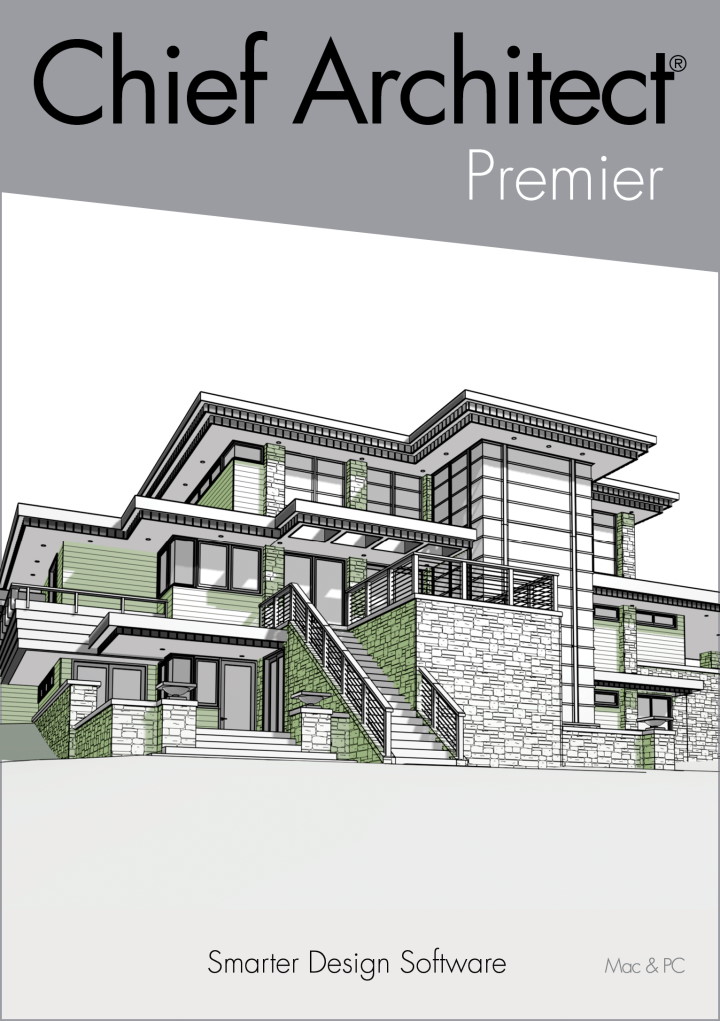Comprehending the Diverse Job Paths Available for Aspiring Architect
As an aspiring Architect, you have a world of occupation courses awaiting you. Each path provides unique obstacles and opportunities to use your creativity and technological know-how. Whether you're attracted to conventional architecture or the nuances of sustainable style, there's a particular niche that straightens with your interests. Recognizing these varied choices can shape your professional trip, yet which instructions will you pick to discover initially?
Traditional Design: Creating Buildings and Frameworks
Traditional architecture concentrates on making structures and structures that mix capability with visual charm. As you explore this field, you'll appreciate the detailed equilibrium in between type and purpose. You'll find out to draw inspiration from historic designs, incorporating components like proportion, products, and workmanship. Your styles can mirror cultural heritage, showcasing local practices while meeting modern-day demands.
You'll develop abilities in preparing, model-making, and site analysis, allowing you to envision and connect your concepts efficiently. Involving with clients, you'll require to recognize their vision and translate it right into possible layouts.
Furthermore, constructing codes and sustainability practices are vital in your job, ensuring your structures are risk-free and environmentally friendly. As you expand in your career, you'll locate possibilities in residential, commercial, and even reconstruction projects, each offering one-of-a-kind challenges. Welcoming conventional architecture leads the means for a fulfilling profession that pays tribute to the past while forming the future.
Urban Planning: Forming Communities and Public Spaces
As an ambitious Architect, you can play an essential duty as an urban coordinator, transforming exactly how neighborhoods engage and function. By using neighborhood interaction strategies, you'll ensure that locals have a voice fit their setting. Plus, incorporating sustainable style principles will help produce areas that not only fulfill today's requirements but also secure the future.
Duty of Urban Planners
While many could think about architects as the single enthusiasts behind buildings, city organizers play an important duty fit the more comprehensive landscape of communities and public spaces. They analyze land usage, zoning laws, and community requires to produce lasting environments that improve quality of life. By teaming up with numerous stakeholders, you'll aid develop parks, transport systems, and household areas that promote social communication and ease of access. Urban coordinators additionally focus on environmental factors to consider, making sure that developments integrate green rooms and assistance biodiversity. Your experience in spatial design and community characteristics permits you to imagine future growth while protecting social heritage. In this crucial function, you'll straight affect how individuals experience their environments, making every job an opportunity for positive change.
Community Interaction Strategies
Reliable community interaction methods are vital for urban organizers to assure that the voices of residents are listened to and valued in the planning procedure. To promote purposeful discussion, you should focus on open forums and workshops where neighborhood members can share their concepts and worries. Use studies and social media to get to a broader audience, ensuring diverse viewpoints are included. Collaborating with neighborhood companies can boost depend on and help with much deeper links. It's crucial to offer clear info concerning proposed projects and decision-making processes, permitting homeowners to really feel informed and empowered. By proactively including and listening comments, you'll produce areas that mirror the neighborhood's requirements, ultimately resulting in more lasting and effective metropolitan settings. Embrace transparency and constant discussion for long-term influence.
Sustainable Layout Concepts
When creating urban areas, incorporating sustainable design principles is important for producing atmospheres that flourish both ecologically and socially. You ought to start by concentrating on power performance, using products that reduce waste and advertise recycling. Think about incorporating green areas, like yards and parks, to boost biodiversity and boost air quality. Advertising walkability and public transport can minimize reliance on cars and trucks, fostering a much healthier area.
Designing with water preservation in mind is also vital-- assume concerning rain gardens and absorptive surface areas to handle stormwater. Involving neighborhood members during the planning procedure warranties that the areas you produce meet their needs and encourage social interaction. By embracing these principles, you'll contribute to lively, lasting city landscapes that profit everyone.

Landscape Design: Developing Sustainable Exterior Settings
As you check out landscape design, you'll discover important design concepts that produce lovely and functional exterior spaces. Sustainable methods play a crucial duty in making certain these settings thrive while lessening environmental effect. Plus, you'll locate a range of profession chances that enable you to make a real difference in how people interact with nature.
Design Principles in Landscape
Recognizing style principles in landscape design is vital for creating sustainable outside atmospheres that integrate with nature. You'll require to contemplate aspects like proportion, equilibrium, and scale to assure your designs feel natural and inviting. Additionally, pay focus to seasonal adjustments, making with materials that enhance the environments year-round.
Sustainable Practices Overview
Lasting methods in landscape style not just concentrate on appearances yet likewise focus on eco-friendly wellness and source conservation. By incorporating native plants, you enhance biodiversity and decrease the need for chemical fertilizers and chemicals. Carrying out effective irrigation systems helps save water and lessens runoff, securing nearby ecological communities. You can make rooms that promote soil health, such as practicing and utilizing organic products permaculture principles. Furthermore, including green framework, like rain yards and permeable pavements, aids in stormwater management and decreases metropolitan warm. You add to a healthier planet and give rooms that cultivate area connection when you produce exterior environments with sustainability in mind. Ultimately, these techniques guarantee your styles benefit both internet people and the environment for several years to find.
Profession Opportunities Expedition
With a solid structure in lasting techniques, landscape style offers a variety of profession paths that enable you to make a meaningful influence on the atmosphere. You could function as a landscape developer, producing aesthetically pleasing and functional outdoor rooms, or specialize in ecological restoration, assisting to restore broken communities. Urban organizers commonly collaborate with landscape designers to create environment-friendly spaces in metropolitan settings, boosting city livability. If you're enthusiastic about education and learning, take into consideration coming to be a landscape architecture educator, motivating future generations. Furthermore, you might collaborate with nonprofits concentrated on ecological sustainability or involve in study to introduce new methods. Each course not just shapes attractive settings however also cultivates a healthier planet for future generations.
Lasting Layout: Concentrating on Eco-Friendly Practices
As you discover your occupation in architecture, embracing environment-friendly practices can set you apart in an affordable field. Lasting layout concentrates on creating structures that lessen ecological impact while boosting resident well-being. By including renewable materials, energy-efficient systems, and sustainable building techniques, you'll add to a greener future.
Beginning by gaining expertise of green certifications like LEED or BREEAM, which can bolster your credentials. Consider exactly how all-natural light, ventilation, and thermal performance can maximize style. Team up with designers and ecological professionals try these out to introduce remedies that reduce waste and save sources.
Do not neglect the relevance of area involvement-- engaging regional stakeholders can inspire styles that integrate with the setting. As clients significantly focus on sustainability, your proficiency in environment-friendly practices will not just draw in tasks however also accomplish your passion for responsible architecture. Welcome this essential element of the career, and watch your profession grow.
Historical Conservation: Safeguarding and Recovering Cultural Heritage
While you start on your building trip, consider the important duty of historic conservation in keeping our cultural heritage. This field concentrates on the defense and remediation of substantial buildings, websites, and structures that tell the stories of our past. By taking part in historical preservation, you'll help protect the architectural legacy that forms area identification.
As a historical conservation Architect, you'll analyze historic importance and examine the problem of structures. You'll work closely with preservationists and chroniclers to guarantee authentic reconstruction strategies are employed. This occupation path enables you to blend creativity with research study, allowing you to develop remedies that respect initial materials and craftsmanship.
Your job not just adds to sustainability by reusing existing structures however likewise cultivates a feeling of satisfaction within areas. Welcoming this course will assist you become a guardian of history, protecting the tales and looks that improve our lives.
Inside Architecture: Enhancing Indoor Spaces
Historic conservation and interior design both share a commitment to boosting the built environment, yet they concentrate on different facets. While historical preservation highlights maintaining a structure's cultural and historical worth, indoor style zeroes in on enhancing indoor rooms for functionality and visual appeals.
As a hopeful Architect, you'll locate that interior architecture enables you to mix creativity with technological skills. You'll develop areas that not just look good however likewise promote comfort and effectiveness. This area includes comprehending just how light, color, and materials connect within an area, affecting state of mind and usability.
You'll deal with various projects, from domestic homes to business workplaces, guaranteeing that each environment meets the demands of its passengers. By focusing on customer experience, you can change interiors right into motivating and functional spaces, making a considerable effect on just how individuals communicate with their environments. Embrace the opportunity to improve interior settings and shape the method individuals function and live.
Industrial Design: Merging Capability With Aesthetics
Commercial design plays an important function in producing items that seamlessly mix aesthetic appeals with functionality, making certain that what you utilize day-to-day is not only visually attractive but additionally useful. As an ambitious Architect, you could involve on your own in this area, concentrating on designing every little thing from furniture to consumer electronic devices. Your job includes understanding customer requirements, products, and producing procedures, permitting you to create innovative options that boost everyday experiences.
In industrial style, you'll frequently work together with producers, marketing professionals, and engineers, making certain that your layouts are not just gorgeous but additionally feasible. This job path provides a vibrant environment where imagination satisfies usefulness, making it a satisfying choice for engineers interested in shaping the items of tomorrow.
Regularly Asked Questions
What Educational Accreditations Do I Need to Come To Be a Designer?
To end up being an engineer, you'll require a specialist level in style, generally a Bachelor's or Master's. Additionally, you'll have to complete an internship and pass the Architect Registration Examination to practice legitimately.
Exist Qualification Requirements for Different Building Occupation Paths?
Yes, there're qualification demands for various architectural paths. Architect. You'll require to pass tests, total internships, and in some cases pursue specialized training, depending on your picked emphasis, like landscape design, city style, or historic preservation
What Software Application Abilities Are Important for Architects Today?

Just How Can I Gain Practical Experience While Researching Style?
You can get sensible experience by interning at building companies, joining design competitors, offering for neighborhood tasks, or working together with classmates on real-world jobs. These opportunities boost your abilities and develop valuable connections in the market.
What Task Opportunities Exist Outside Typical Style Firms?
You can explore various task possibilities outside conventional style companies, like city planning, interior decoration, landscape design, building administration, property advancement, or perhaps functions in sustainability consulting. Each deals check it out unique obstacles and rewards.
Whether you're drawn to typical style or the nuances of sustainable design, there's a particular niche that straightens with your rate of interests.When creating urban rooms, integrating sustainable design concepts is crucial for creating settings that prosper both environmentally and socially.As you check out landscape style, you'll find important style principles that produce useful and lovely outdoor spaces.Understanding design concepts in landscape style is essential for developing lasting outside settings that harmonize with nature.In industrial style, you'll frequently collaborate with marketing experts, producers, and engineers, guaranteeing that your designs are not just attractive however likewise possible.